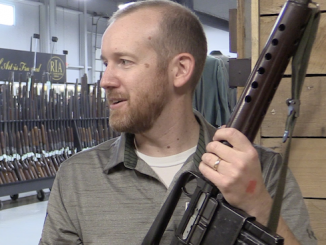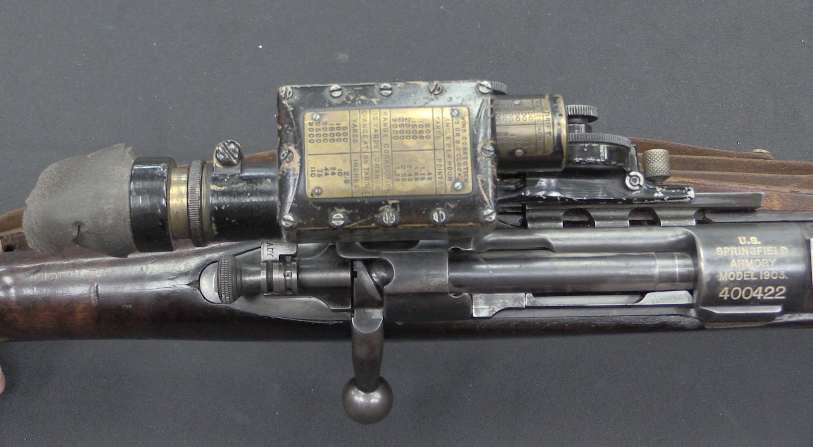“Clockwork Basilisk: The Early Revolvers of Elisha Collier and Artemas Wheeler” is available right now for preorder on Kickstarter:
https://www.kickstarter.com/projects/headstamp/clockwork-basilisk?ref=7zdbzu
Most of the historical recognition of Elisha Collier comes from the 1851 and 1852 patent infringement lawsuits Colt files against Wesson & Leavitt and other revolver manufacturers. Colt was claiming these other guns in fringed on his patent, and the defense argued that Colt’s patent was invalid because what he claimed had already been invented by others. Collier took the stand as a witness, and today Professor Ben Nicholson and I are discussing what happened in the trials and why. Was Colt’s patent actually invalid? And did he know it when he filed that patent?




I think there’s a serious flaw to our patent system.
OK, fine… Collier developed a revolver that Colt built on. However, he brought virtually nothing to market. Had Colt lost those court cases, he’d have had nothing to show for his efforts to develop and market a mass-produced revolver.
Is this reasonable? I would submit that it isn’t.
Likewise, Colt having his patents validated did nothing to speed the development of revolver technology in general, because he was able to hold others back from producing improved variations on his theme. Same thing later happened with the cartridge conversions of revolvers, which were held back by decades because of the patents on the idea of boring through the cylinders to make cartridges work.
None of this has done anything to actually further technologic development or much of anything besides making lawyers very rich.
I’d submit that a re-think of the concept of “patent” would be in order, along with “copyright”. What we should be doing is patenting something, making it public, and then saying that anyone using that mechanism, process, or technique is due a percentage from derivative works, and that if they don’t actually bring a product to market, they only get a smaller share of whatever is judged to be derivative. Too many good ideas get locked up or litigated because some jackass got a patent on something that should have been obvious to anyone familiar with the state of the art and its likely progression, and then block development because “patent”. If you can’t bring it to market? It shouldn’t be yours to lock up for the period of a patent. Nor should anyone be able to use the idea and then fail to pay you for it, either.
With copyright, especially as it pertains to things like computer programs? You should have to put everything out there for the duration of your business’s selling it. You go out of business? You take it off the market? Fine; your source code is filed with the copyright office, and the moment you cease doing business or selling the program, your code is out there for people to see and use, paying you for what they take out of it.
There are way too many things we’ve lost along the way from “back when” to “here”, things like the old OS/2 Warp word processing platform, Describe. That thing was amazing, a true blend of a desk-top publishing paradigm and word processing. I’ve yet to find a Window’s program that is anywhere near as versatile or simple to use. Yet, it’s lost and gone forever, because OS/2 Warp died as a desktop OS, and took Describe with it.
Likewise, if the book is out of print, unavailable at a reasonable cost? Kiss goodbye to the copyright. Once you cease selling it for a reasonable market-based cost, it’s now public domain. Period.
People’s pride gets in the way, Kirk. “It was MY idea! MINE!!!!” I have heard plenty of stupid, and much of it beyond common sense. Some stupid Chinese Communist sympathizer showed me a “wanted poster” of Henry Ford for the crime of “stealing the invention of motorized carriages from the GREAT CHINESE EMPIRE.” I told him to get lost, since we were standing on AMERICAN SOIL. Plus, Henry Ford never claimed to have invented the automobile. I could be wrong.
You’re not. However, Ford, Ransom E. Olds, and other early car maskers spent years in a patent fight with a man who claimed exclusive rights to the internal combustion engine, and then the automobile. Look up “George B. Selden”. He was a patent attorney by trade.
What finally sank him was a court ruling that since stationary IC engines running on “town gas” were in use in industry about the time he was born, he hadn’t actually invented anything to do with piston engines. And that since Otto and Daimler had built prototype “horseless carriages” before he did, he hadn’t actually invented anything to do with “automotives”, either.
Patent fraud was very big business in Europe and the U.S. from the 1840s on up to WW2. Selden was just one of the more egregious examples, along with the legendary Rollin White.
In Ignition! An Informal History of Liquid Rocket Propellants (Rutgers U Press 1971), Dr. John D. Clark tells some interesting stories of the patent feuds in the chemical industry in the 1940s to the 1960s relating to the development of unsymmetrical dimethyl hydrazine (UDMH) and inhibited red fuming nitric acid (IRFNA), the workhorse LRP combination still used in launch vehicles today.
He points out that when the German propellant chemists from BASF, BMW and etc. came over here after VE Day, they brought all their “patents” with them- and were stunned to find out that most of them didn’t qualify because U.S. patent law even then was stricter than those of Germany and other European countries.
I guess we did learn something from George Selden- and Rollin White- after all.
cheers
eon
I detest intellectual property from one end to the other. There are many other examples of patents gone awry. James Watt improved Newcastle’s steam engine and paid no royalties, but he did block everyone who tried developing high pressure steam engines for ships and locomotives. The Wright Bros sat back and waited for customers to come begging, while Europeans plowed ahead, not doing very well for a while, but they did exceed Americans within a few years. Curtis evaded the wing-warping patent with ailerons, and that battle lasted so long that the US government forcibly bought the patent so they could have planes for the war.
This is just another example, and the discussion shows how much patents held back progress. Collier persevered, but not as much as Colt; but Collier didn’t lie, far as I can tell, while Colt did, and Colt had better lawyers. Roland White spent more money defending the patent he sold than he collected from that sale.
I once worked on a scheme for “just” patents. Roughly, when you wanted to patent something, you published the specs and royalty schedule. If someone produced a working copy using those specs, the interval from publication to first copy determined the length of the patent; maybe ten times as long, maybe the same, that’s something for the legislature to determine. If no one produced a working copy within some interval, say 5 years, the patent lapsed.
The inventor’s incentive is to encourage a working copy so his patent becomes valid, thus the patent has to be clear. The copycats have two choices: make a copy as soon as possible to keep the royalty period as short as possible, or wait until the patent expires to produce working copies without royalties.
Copycats also have to worry about competitors; if they produce a working copy while you are holding out hoping no one does, they will come to market sooner. So they all have the incentive to be first.
I thought it was pretty clever, not all that complicated, and didn’t see any bad incentives or loopholes.
I should note that I don’t claim my “just” patent idea solves the major problems of quibbling over what is a copy and what is different, not does it obviate the need for expensive patent lawyers. I only claim that it differentiates patents by how complex they are and encourages clarity and discourages frivolity, since an trivial patent (like rounded corners on a smart phone) can be reproduced so fast that the patent expires too soon to be worth anything. After all, simply producing a copy doesn’t obligate the copycat to actually produce and sell copies.
“(…)word processing(…)Describe(…)ve yet to find a Window’s program(…)”
In such situation I must warn you that there exist Describe for Windows v2.0 which is available at https://archive.org/details/DESC20_ZIP though I do not know if it would work correctly with your system.
“(…)got a patent on something that should have been obvious to anyone familiar with the state of the art and its likely progression, and then block development because “patent”(…)”
That is probably due to lack of equivalent of Austrian Gebrauchsmuster https://de.wikipedia.org/wiki/Gebrauchsmuster which might be granted to invention stemming from current state-of-art only requiring invention to not be described earlier and not in use inside country.
Rollin White was a classic patent fraudster. His “bored-through cylinder” gag, which mainly saw him acting as a legal attack dog for Smith & Wesson, was just one example.
His usual MO was to read through foreign publications looking for new devices etc. that had been “patent applied for” in Europe, then basically copy them, put his name on them, and file for a U.S. patent. When the original (foreign) patentee applied for a U.S. patent, White would then sue them for “infringing” his “patent”. He made a considerable amount of money with out of court settlements, that were basically bribe buyouts.
It worked because White was in Washington, and thus he had quicker access to the U.S. Patent Office than any foreign inventor. Also, he was apparently bribing at least two Patent Office officials to “slow-walk” foreign patent applications, and in some cases give them to him to copy and file in his name before processing the originals.
His only verified independent patent was for a modified S&W No.3 revolver with a second, single-shot barrel under the revolver barrel, for a shot cartridge, which rotated sideways on a pivot for loading and unloading. Since the LeMat revolver was never actually patented (Hence each on being marked S.G.D.G. on the barrel rib, for “Sans Guarantie Du Government“), he actually got away with that one, because nobody really cared enough to contest it. Today, there are several types of underbarrel grenade launchers for military rifles which have breech actions operating on a very similar principle.
Ironically, White’s infamous “bored through cylinder” patent included one actual original feature. To reload the cylinder, he added a spring-loaded box magazine on the left side of the revolver frame, sticking out horizontally. It was very like James Paris lee’s box magazine patent of a decade later, that was the basis for detachable box magazines still in use today.
Since he only put it in the drawings but did not mention it in the text, it was not part of the patent claim.
As the old saying about patents goes, “You can picture your elephant, and even describe your elephant, but if you do not claim your elephant it is not your elephant“.
cheers
eon
As I understand it Colt would have still won his court case against MAC on the bit of his patent that included a metal shield between each set of nipples to prevent chain fire. If so, thet that is well up there with Rolin White through boring.
What I do not get is the timeline between these arguments and Casimir Lefracheaux’s patents. Why did they not come in to play in all this BrooHaHa ? Would love to here a commentary on that.
The fact that LeFaucheux’s French patent, that predated White’s by a year and should have been honored under the “reciprocity” agreement on patents between the U.S. and France, was not even mentioned in the White case was one reason that President Grant vetoed an extension of White’s patent appealed for by a “relief” bill in Congress in 1869. (At that time, “letters” patents ran 14 years.)
Grant pointed out that not only had the Union suffered greatly due to the White patent largely preventing the manufacture of metallic-cartridge revolvers during the Civil War (the .44 Henry cartridge was available by 1862 and was entirely suitable for revolvers as well as rifles), he also cited the LeFaucheux patent as a reason the White patent should never have been granted in the first place. After all, LeFaucheux’s system required a “bored-through” cylinder due to the impracticality of loading a pinfire cartridge from the front of the chamber.
There is evidence that the patent search that must have accompanied White’s patent application (done by the Patent Office) was either done in a slipshod manner or deliberately did not take the LeFaucheux patent into account. The one would indicate incompetence; the other would indicate deliberate dishonesty.
Unfortunately, neither one would be exactly a surprise at the U.S. Patent Office.
cheers
eon
Thanks Eon,
That is something that has bothered me for some time. As for Colt and Lefracheaux, did the latter not display revolving guns with single, double and triple action quite early on?
Thank you for the video and for shedding light on this discussion. The historical context of Collier’s involvement in patent infringement cases against Colt perfectly illustrates how complex intellectual property disputes were at the time. I read about this in a detailed research paper prepared by the authors at https://essays.edubirdie.com/law-assignment for my college project. I was impressed by the depth of the writer’s research as they carefully examined the arguments, evidence, and possible motives behind Colt’s patent claims. Such a thorough investigation allowed me to understand better whether Colt’s patent was indeed invalid and whether he knew this at the time of filing.
Thank you for the insightful discussion about the historical recognition of Elisha Collier and the patent infringement lawsuits involving Colt, Wesson & Leavitt, and other revolver manufacturers. These trials shed light on the validity of Colt’s patent and whether he was aware of any potential shortcomings when filing it. It’s fascinating to explore whether what Colt claimed in his patent had indeed already been invented by others. Collier’s testimony as a witness adds an intriguing dimension to these discussions. I look forward to delving deeper into the trials and the complexities surrounding Colt’s patent claims with Professor Ben Nicholson.